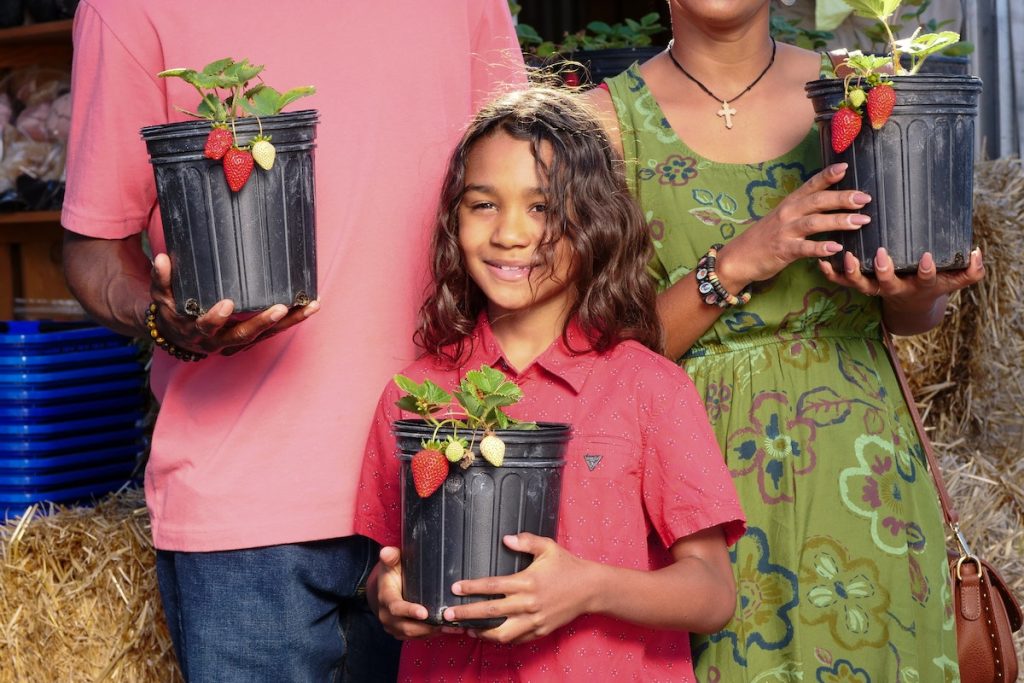Introduction
Strawberry plants, renowned for their sweet, red fruit, are a common sight in gardens and farms around the world. Beyond the aesthetic strawberry appearance, these plants play an essential role in various fields. They are a crucial component in global agriculture, contributing significantly to the food industry.
Perennial strawberries are also crucial for biodiversity, serving as a habitat and food source for numerous insects and birds. Recognizing what a strawberry plant looks like is the first step towards understanding and appreciating its rich contributions to the ecosystem.
Flowering – A Key Stage in Strawberry Plant Growth
The flowering stage is of paramount importance in the life cycle of a strawberry plant. This phase marks the beginning of fruit production. Each flower, once properly pollinated, has the potential to develop into a succulent strawberry fruit. The flowers are generally white with a yellow center and are crucial indicators of a healthy, fruit-bearing plant.
Recognizing the flowering stage can provide valuable insights into the expected yield of strawberries. Moreover, the flowers attract pollinators essential for successful fruit production. Therefore, the significance of flowering in strawberry plants should be considered, as it directly links to the quantity and quality of the fruit produced.

Why Strawberry Plant Is Not Flowering?
Here are ten reasons why strawberry plants may not be flowering:
Lack of Sunlight
Strawberry plants require ample sunlight to produce flowers and, eventually, fruits. If the plant is not receiving adequate sunlight exposure, it may lead to poor flowering or no flowering at all. Ensure that your plants are placed in a spot where they can receive full sun for at least eight hours every day.
Inadequate Pruning
Overgrown or unpruned strawberry plants can produce fewer flowers as the plant’s energy is focused on sustaining its foliage rather than producing fruits. Proper pruning techniques, such as removing runners and old leaves, can help the plant allocate more resources toward flowering.
Overcrowding
Overcrowding is another factor that can adversely affect strawberry plant flowering. When strawberry plants are placed too closely together, they compete for essential resources such as sunlight, water, and nutrients. This competition can cause stress to the plants, preventing them from allocating energy towards flower production. Overcrowded plants may also have reduced air circulation, creating a damp environment conducive to disease and pest infestation, further hindering flowering. Hence, maintaining appropriate spacing between strawberry plants is crucial for their overall health and productivity.
Poor Soil Quality
Poor soil quality is a significant factor that can impede the flowering of strawberry plants. Strawberries prefer well-drained, loamy soil rich in organic matter. If the soil is deficient in vital nutrients, particularly phosphorus and potassium, essential for bloom development, the plant’s ability to produce flowers can be compromised. Furthermore, an unsuitable pH level in the soil can hinder the plant’s nutrient absorption process, leading to poor overall health and reduced flowering. Compacted or waterlogged soils can also negatively affect the plant’s root system, resulting in stress that hampers flowering. Therefore, regular soil testing and appropriate amendments are crucial to ensure optimal soil conditions for strawberry plants to thrive and flower.

Improper Watering
Strawberry plants need adequate water to thrive, but over or under-watering can also adversely affect flowering. Over-watering can lead to root rot and other diseases, while under-watering can cause the plant to wither and affect flower production. So, watering strawberries properly is essential for their overall health and flowering.
Nutrient Deficiencies
Strawberry plants require a balanced supply of essential nutrients such as nitrogen, phosphorus, and potassium to produce flowers. Nutrient deficiencies can result in stunted growth and poor flowering. Providing the plant with a suitable fertilizer can help rectify this issue.
Extreme Temperatures
Extreme temperatures can dramatically affect the flowering of strawberry plants. These plants prefer moderate climates, with optimal growth occurring between 60 to 80 degrees Fahrenheit. When exposed to excessively high temperatures, strawberry plants may experience heat stress, hindering flower production and leading to wilting or even plant death. Conversely, extremely cold temperatures can cause damage to the plant’s cellular structure, resulting in stunted growth and reduced flowering. Therefore, it’s essential to protect strawberry plants from extreme weather conditions, using mulching for cold protection, shading structures, and regular watering during heatwaves.
Pest Infestations
Pest infestations can have a detrimental impact on the flowering of strawberry plants. Pests such as aphids, spider mites, and slugs feed on the plant’s leaves, stems, and flowers, inhibiting its ability to carry out photosynthesis efficiently. This stunts the plant’s growth and reduces its ability to produce flowers. Furthermore, certain pests can introduce diseases to the plant, further exacerbating the impact on flowering.
Disease Issues
Diseases can significantly impact the flowering of strawberry plants. Fungal diseases such as powdery mildew, leaf scorch, or Verticillium wilt can affect the plant’s overall health, hindering its ability to produce flowers. These conditions often manifest as discoloration or deformation of the leaves, which reduces the plant’s photosynthesis efficiency. This affects the plant’s energy reserves, hampering its ability to produce flowers and strawberries. Bacterial and viral diseases can also pose serious threats to the flowering of strawberry plants, causing symptoms ranging from stunted growth to complete plant death.

Age of the Strawberry Plant
The age of the strawberry plant can significantly influence its ability to flower and bear fruit. Young, newly planted strawberry plants may not flower in their first year as they are still developing their root system and gaining strength. On the other hand, mature plants, usually in their second and third years of life, are at their peak of productivity, producing the most substantial number of flowers and, consequently, fruit—however, their yield declines as the plants age beyond their prime. Older plants, typically over three years, often decrease vitality, resulting in fewer flowers and smaller, flavorful berries.
Bottom Line
Several factors can prevent a strawberry plant from flowering, including inadequate sunlight, improper pruning, overcrowding, poor soil quality, improper watering, nutrient deficiencies, extreme temperatures, pest infestations, diseases, and the plant’s age. To encourage flowering, it’s crucial to ensure sufficient sunlight exposure, appropriate pruning, sufficient space between plants, optimal soil conditions, proper watering practices, and a balanced nutrient supply. Additionally, protecting plants from extreme climates, preventing pest infestations, controlling diseases, and understanding the impact of the plant’s age on its flowering can significantly enhance the plant’s ability to produce flowers and strawberries.




